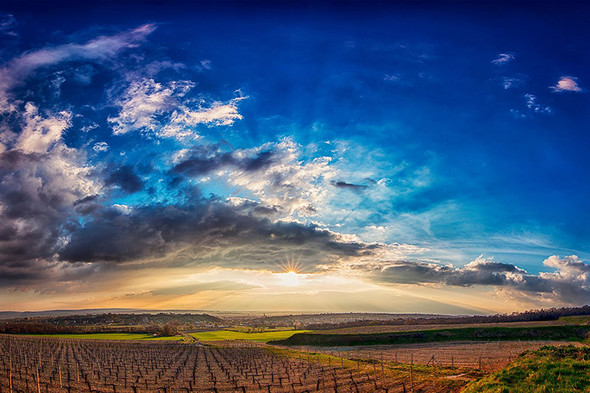Cover photo by Roland Falusi
The history of the Mór Wine Region goes back to Ancient Roman times. The area was inhabited at the time of the Hungarian conquest (9th century AD) already and the first written reference to the vineyards of the region dates back to the 12th century when Bodajk grapes were mentioned in a grant letter. Mór and the surrounding villages had all been parts of the episcopal estate until 1327 when Charles I annexed the area to Csókakő castle (built in 1229 by the Csák clan). The most probably progressively developing vineyards were destroyed by the Ottoman-Hungarian wars and after 145 years of foreign rule (1543-1688) a new, 300-year old story began. After the Turkish left Hungary, János Haas from Hochburg became the new landlord in 1691. First, he worked as a commissariat officer, then he received the title of nobility (1648) and was knighted (1683) using the coat of arms of Hochburg (1658). He was acting as court councillor and senior army food prefect at the time of the estate transfer. In 1692 the chapter of Győr registered the Hochburg family in their new estate purchased for 60,000 Rhenish guilders.
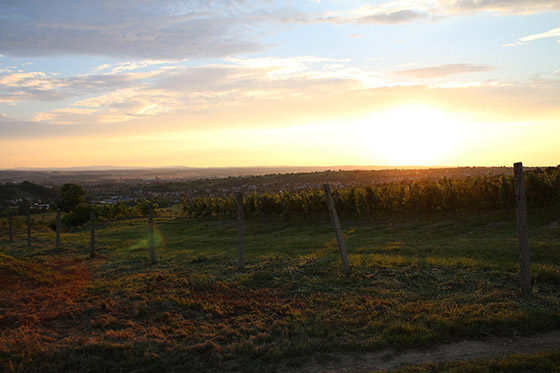
Photo by Molnár Borház (Facebook)
The centre of the estate was established in Mór starting from 1694 and German settlers were invited to cultivate the land. A church and monastery for the Capuchin Order were built (consecrated in 1701). As the Hochburg family died out in the male-line in 1752, Austrian aristocrats of the Lamberg family, the new estate owner from the female side moved in. The large-scale German settlement was successful as the population grew steadily (in 1763 there were 2,900 persons while in 1784 as many as 4,166). In 1758 Count Franz Anton Lamberg requested the Queen to declare Mór a market town. Maria Theresa’s charter issued on 16 March 1758 granted the privileges of an agricultural market town and allowed, in addition, to the municipality of Mór to hold four fairs annually. This was when Mór received its seal depicting a fruit tree, a grapevine and a bunch of grapes, thus referring to viticulture. Relatively exact data are available concerning the varieties grown at that age as the Capuchin Monks asked for and were given Bakator, Fehérszőlő (Lisztes fehér), Góhér, Ökörszemű, Járdovány and Furmint vines for plantation. The cellars and press houses of Mór were built that time, including the Baroque press house of the Lamberg family. The prices of the Mór wines were rising and sometimes even came in second after Tokaji. As for the parcels, descriptions of the time mention Pityer-hegy, Sárkány-tó, Cseres domb and János-völgy, while Csóka-hegy, Aranyhegy, Gránás and Pohár-hegy are known today, as well. (András Vályi dedicated a whole entry to Csóka-hegy in 1796 describing it as a notable wine-making area.) In his geography of Hungary of 1851 Elek Fényes mentions an “immense grapehill” near Moór and really good wine while he says the following about Csókakő:
Maybe the best wine is grown here in the whole county.
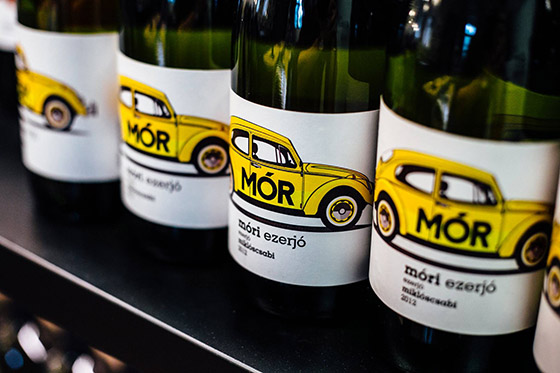
Photo by Márton Farkas
The boom lasted until the phylloxera epidemic. Even if the bug did not love the parcels with high quartz content, it caused real devastation. This happened around the same time when the volumes of The Austro-Hungarian Monarchy in Word and Picture encyclopaedia were published, containing the below description of the region written by Sándor Wekerle, politician and Prime Minister:
The bigger part of the Vértes is covered with oak forest; endless rows of grape vines stretch at the bottom of its western and southern slopes, starting from Orond, through Csókakő, up till Moór and Pusztavám situated at the edge of the county. This is not only one of the largest but also the best-cultivated wine producing region of the country. The fine wine made around Csókakő is a high-quality table wine similar to the one produced in Neszmély but the produce of Moór hills is also heavy and sweet not only fine-tasting, so it is perfectly suitable for mixing with lighter wines and as a result, is much in demand. The destruction caused by phylloxera did not spare this region, either and almost completely destroyed the grapes of the Csóka area with rocky soil while the production of the Moór estates with sandy-clay soil dropped by half. Nevertheless, cellar management had also been exemplary in these regions; Austrian wine merchant had been regular buyers here and in the municipality of Moór trade procedures had been officially regulated; expert brokers dealt with selling and the municipality duly registered all sales to protect its interests against the distribution of fake goods. Moór itself had often sold over 50,000 hectolitres of wine for 22–25 forints per litre. While most of the intellectuals tackled the buying and expedient management of must, the farmers made a huge profit from grape production, and the craftsmen also benefited from this public welfare as well as their own grapes or wine trade. Today the hard-working residents of the town do their best to renew their vines; they are buying the adjacent, expensive sandy areas so that they could earn the income they had had previously from the wine, and thus utilize their unique expertise in the field of viticulture.
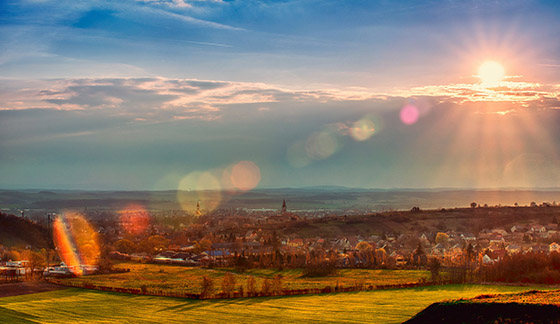
Photo by Roland Falusi
The producers of Mór, which had belonged to the Neszmélyi Wine Region (starting from 1893), finally requested the establishment of an independent Móri Wine Region as early as 17 April 1900 but this had to wait until 1928. Until World War I, the development of the related technology reinforced the winemaking of the region together with cooperage. However, the market crisis and national problems that followed WWI resulted in massive emigration and the decrease of cultivated vineyards. According to a 1936 decree issued by the Ministry of Agriculture, only the Ezerjó variety was allowed to be planted in the wine region thus becoming the dominant grape after the phylloxera epidemic. This variety – known as white Bakator in Transylvania, Kolmreifler, Korponai, Budai White or Trummertraube elsewhere – and Mór has been a successful match from the consumers’ point of view. (It is interesting to consider that if Ezerjó was also sent to the Mór Capuchins by the monks from Tokaj – as the story goes – the surviving Bakator is nothing else but the White Bakator, i.e. Ezerjó; so that time, at the beginning of the 1700s Ezerjó variety was also grown in Tokaj-Hegyalja.) As the consequence of resettlements following World War II, 1,700 residents of German origin had to leave Mór, and afterwards state-run agricultural cooperatives were founded, privately-owned small estates disappeared and mass wine production began. In Mór this started in 1949 with the establishment of the Móri Állami Gazdaság (State Farm) and its cellar with a capacity of 100,000 hectolitres. In the 70s and 80s raw material was bought even from the Mátra to fill it up. After the change of the regime the Farm was wound up leaving no legal successor and the area was divided into small fragments. Currently, Mór and its region – with the exception of few family cellars – are practically unknown but fortunately, there is a light at the end of the tunnel.
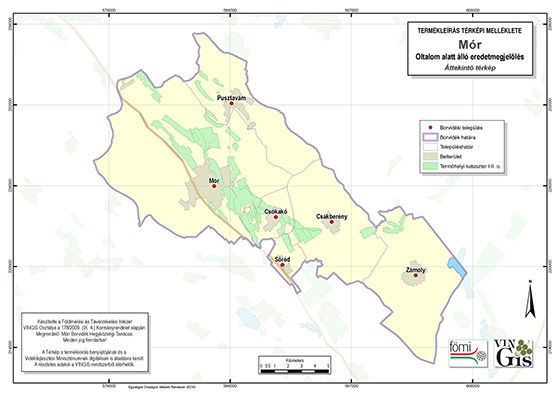
The official Mór wine region map with the 6 villages, maded by FÖMI Hungary.
Geology
The Móri Wine Region lies mostly in the southern, south-western slopes of the Vértes mountains, in the so-called Móri-árok (trench) dividing the Bakony from Vértes, a mostly dolomite range created in the Triassic, during the Mesozoic Era. Dachstein limestone may only be found outside Mór. The hills around Móri trench are mostly Pannonian loess and clay hills. The soil structure on the bedrock is rather varied inside the wine region. Micaceous sandstone is typical in sandy areas such as Aranyhegy, Örömhegy, Táborhegy, Reményhegy, Hankút, Homok, Kertalja, Páskom, Vaskúti, Katúkúti and most of the Látóhegy parcels. (Látóhegy, which belongs to Csókakő, has always been one of the best Mór parcels.) The most outstanding lime content can be found in the northern corner of Táborhegy and Homok dűlő while Kertalja is mostly acidic sandy soil. The soil of Nyúl-hegy and Remény-hegy is also chalky, similarly to Aranyhegy. Kecske-hegy is predominantly loess mixed with marl in some places (Hétkút dűlő). The climate of the region is really favourable to wine production even though it is cooler than the Hungarian average. There is constant airflow in Móri-árok which means less frequent frost damage and fungal diseases. The annual average temperature is ten degrees Celsius with 600-650 mm precipitation a year. The number of sunshine hours is somewhere between 1,900 and 2,000 hours. All in all, it is true that independent parcels appearing in product description are not protected; observations make it clear that certain areas with well-definable micro-climates (e.g. Csóka dűlő) can regularly produce above-average quality compared to the whole of the wine region. Concerning parcels, it seems that many times it is not the soil but exposure and climatic characteristics are of key importance.
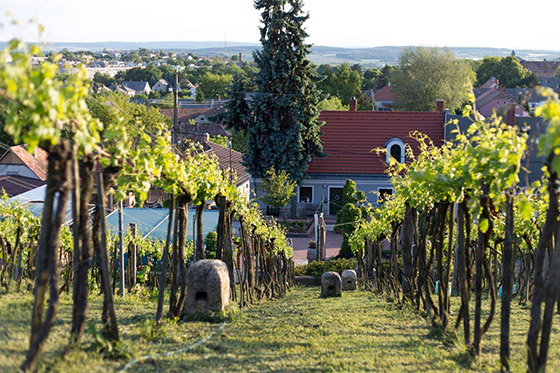
Photo by Csetvei Pince (Facebook)
Area of wine region: 1,990 ha
Planted area: approx. 560 ha
Municipalities of the wine region: Csákberény, Csókakő, Mór, Pusztavám, Söréd, Zámoly
Wine Region Journal
If you say Mór, I say Ezerjó! This is true even today especially among consumers but the wine region does not really seem to take this opportunity. Not only Ezerjó but also beautiful Leányka, Királyleányka, Chardonnay and Tramini grapes paint the hills green.
After the change of regime, for many years, the name of one well-known family cellar stood for the whole region. Fortunately, in the past decade an increasing number of people from younger generations that grew up (or moved) here have started to see the opportunities this wine region offer. So now wine lovers shopping in sophisticated wine shops can come up with a list of 4-5 smaller cellars (like the Geszler Family Winery) without fail if Mór is mentioned. These minor but innovative cellars are characterized by creative image and they do not want to “catch” the consumer with the region and the variety but more with the message on the label which may be funny, witty or even unconventional.
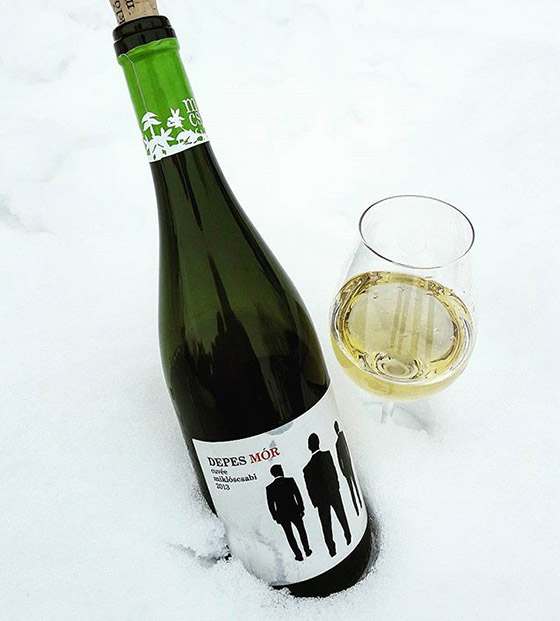
Photo by MiklósCsabi (Facebook)
Sadly, however, only a dozen of the several hundreds of producers make high-quality bottled wine. After the change of regime, it has become clear that the terrible, acidic nightmare of Mór is in fact far from the truth; it has more to do with the badly chosen harvest date. It is also a rarely communicated fact that aszú wine is made from Ezerjó in this wine region, in the same manner as the Tokaji, though much more seldom than in Tokaj.
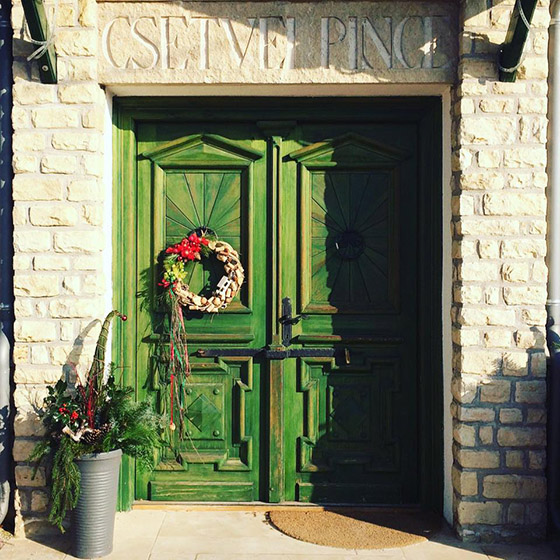
Photo by Csetvei Pince (Facebook)
Conclusion
Some winemakers have produced quite a few high-quality wines in Mór in the past ten years but this, unfortunately, is known only among educated wine consumers. Young winemakers, at the same time, have created their own, distinctive images – adapting to market demand and opportunities – to address consumers but it makes the image of the whole wine region fade into the background. This phenomenon in itself would not be a problem but it may make the communication between cellars to be opened in the future, more difficult.
Nevertheless, we are simply happy being offered Mór wines in Budapest wine shops and wine bars; now anyone may taste them and youngsters are clearly responding to the message of Mór.



